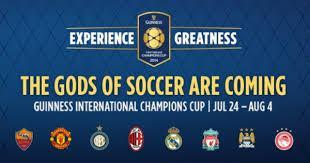Imagine a tournament where only the biggest names in European football would play, guaranteed admission despite their poor league season, assured of huge prize money irrespective of performance and free from the potential embarrassment of small up-starts humiliating them in front of a global audience of millions.
This is the dream of the biggest clubs of football, the utopia of an European Super League which has been discussed in closed meetings for many years. Whilst UEFA will bang the drum about the Champions League, the fact it is based on merit means that sometimes the small, unfashionable teams can upset the apple cart. Whilst Platini and co politely clap the efforts of clubs like Nordsjælland in Denmark or BATE Borisov in Belarus, their inclusion (on merit it should be said) at the expense of Manchester United or AC Milan does not fit with their agenda of raising the stakes in terms of sponsorship and global television rights dollars. But try as they might, they cannot manipulate the tournament so only the “big clubs” qualify each year.

Football today is all about money though and these clubs are highly marketable in any and every global market. So it was no surprise that a tournament was arranged, pitting together some of the most marketable clubs in Europe. In fact it is amazing it took until 2013 for it to happen. In 2013 Canada and the US hosted this tournament, won by Real Madrid, which featured seven of Europe’s biggest clubs plus the Los Angeles Galaxy. Last season’s edition featured both Manchester clubs, Liverpool, the two Milan teams, Juventus, Real Madrid and Olympiacos, playing games in thirteen venues across North America. Whilst United beat Liverpool in the final, the main talking point was the unbelievable 109,318 fans who watched the game at University of Michigan’s “Big House”, the first time the stadium had hosted a “soccer” match. More than 631,000 fans attended the tournament live with a global audience of over 80 million tuning in in over 150 countries. Hard to argue with the success of the tournament based on those numbers.
The clubs may dress these games up as pre-season run outs but the prize money on offer means they are incredibly lucrative for them. Gone are the days of a trip to Scotland to play Buckie Thistle or Cove Rangers. Today it is all about 5-star first class travel to the other side of the world to glad hand a few local businessmen and appease the global sponsors. With North America now fast becoming the biggest overseas market for the “EPL” thanks to the success of some of its exports as well as the “Beckham” effect, it is no surprise that clubs are keen to play these games, even if they are against teams they line up against week in, week out. Just a week after the Premier League season had finished in May 2013, for instance, 2nd place Manchester City played Chelsea not once, but twice in a matter of days in two venues across North America, watched by nearly 90,000 fans.
This isn’t the first time the USA has tried to woo English clubs over to North America. In the 1960’s the International Super League was created by a wealthy US Businessman called William Cox who saw an opportunity to bring international football sides to the US to play local sides in more than just exhibition games. The politics of American Soccer at the time meant that its format was never rigid and was often complicated, but was ultimately a success. In fact, the creation of the North American Soccer League in 1969 and the import of marquee players was in part due to the success of the tournament.
In its first season in 1960 Cox managed to convince some of the biggest names in European football to play. The concept was that the ISL was divided into two “sections” formed of six teams played at different times during the close season. The winners of the two sections then met each other in the final. The tournament ran for four seasons, with such big clubs as West Ham United winning the tournament. You can read more about that tournament’s history here.
Whilst 2014 was only the second edition of the International Champions Cup, few can argue that this will be the future of our European game if Platini gets his way. However, the 2015 version appears to take the tournament to a new level. This year the ICC will be contested across three continents, with parallel tournaments running in North America, Australia and China. The line-up for ICC Australia has already been announced, with Real Madrid, Manchester City and AS Roma confirmed for a three-match round robin tournament at the Melbourne Cricket Ground. Whether the three tournaments will cumulate in a grand final somewhere in the world is yet to be seen. Will any of those three actually be champions within their domestic leagues? Very unlikely.
As of the start of April no other teams have announced they will take part in the tournament. It is inconceivable to think that Barcelona, Manchester United and Chelsea would pass up a chance to play in China if offered the opportunity. The world’s biggest population, and more importantly, the biggest economy is the market that all the top European clubs want to break. These football-mad fans do not care that clubs like Manchester United, Liverpool, Real Madrid or AC Milan are not champions in their domestic markets. In some instances, the players become bigger than the actual clubs – Ronaldo and Messi for instance are almost national heroes in China.
Is it a surprise that this season’s edition of the tournament will be the biggest yet? Absolutely not. Until UEFA can engineer the Champions League so that the biggest clubs, and consequently the biggest marketing assets are guaranteed entry into the tournament every season irrespective of their final league position this tournament will continue to grow, and for the clubs involved an important source of additional revenue.

